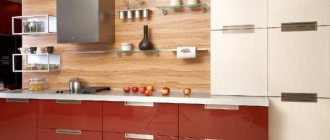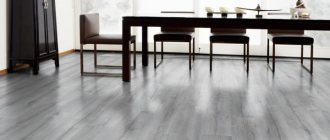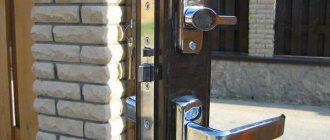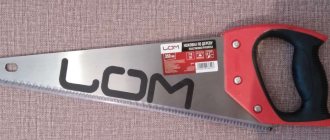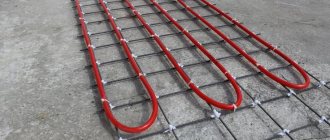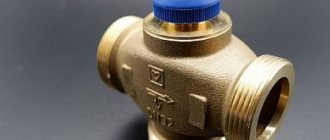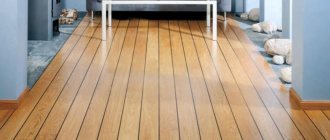With the advent of various modern flooring materials such as laminate, porcelain stoneware or PVC tiles, wooden flooring has ceased to be used everywhere. On the one hand, parquet or solid boards are certainly more expensive than laminate, on the other hand, such a floor will fit into absolutely any interior: from minimalism and Scandinavian style to classics. Architect Pavel Gerasimov told The Village about the pros and cons of wooden flooring, what determines the final cost of such a floor and how to care for it.
Pavel Gerasimov
architect, co-founder of Geometrium studio
If we talk about using wood as flooring in an apartment, then first of all it’s worth remembering the tactile sensations: walking on a wooden floor barefoot is much more pleasant than walking on tiles or laminate. There are, of course, many stereotypes about the impracticality and fragility of a wooden floor, but it should be noted that the wear and tear of wood only makes it look better. If you pay attention, for example, to a wooden floor in a restaurant, you can see how it “lives”: all its acquired abrasions, on the contrary, give it a certain aesthetics and uniqueness. And a restaurant is a public place where a large number of people pass by in street shoes every day. This definitely won’t happen in an apartment or house, so you shouldn’t worry about excessive wear and tear on the wooden floor.
Features of the floorboard
The advantage of floor boards is that they are made from solid wood, while parquet boards are created in layers, thereby being inferior in strength to floor boards.
Floor boards must meet certain requirements:
- The surface should not have knots. Fully sanded and smooth.
- The boards must be dried at the factory. The boards must be dry. If you use damp boards to lay the floor, they will dry out and quickly become unusable.
Floorboards are made from various types of wood; the most popular are boards made of oak, elm, beech, ash, maple, pine and larch.
The most durable type is considered to be floorboards made of oak and beech. They are the most durable and at the same time the heaviest. To install them, there must be strong fastenings. The high price is due to the long service life.
Floor boards made from larch and pine are considered lighter and cheaper. They are lighter than oak, but due to this they have a shorter service life.
Advantages and disadvantages of plank floors
Of course, one of the main advantages of a wooden floor is its safety and environmental friendliness. The benefits don't end there. A wooden floor will last you a long time.
The wooden floor has its own pattern; it also adds ambiance and comfort.
Wooden floors also retain heat well. It can be repainted in different colors depending on your desires.
- The disadvantages include the fact that wooden floors are exposed to moisture. It can harbor various bacteria and fungi. Wood is one of the objects that can catch fire. Installing a wooden floor requires a lot of effort.
- Floorboards are sold in their pure form. The finished floor is already covered with various varnishes or paints. This can be considered a plus, since after losing its appearance, you can sand the floor and apply a new, fresh coating.
Before installing the floor, it is necessary to coat the boards with water-repellent compounds.
Wood selection
The wooden covering is selected based on its ability to match: the type of room, temperature and humidity, the degree of expected loads and other operating conditions. Most often, residential buildings have flooring made of pine, spruce or larch. These species are strong, wear-resistant and much cheaper than deciduous species. However, aspen or oak will last much longer - not years, but several decades.
Important! Most often, edged boards or tongue and groove wood are used for laying a wooden floor. They do not need additional sanding.
Types of boards
There are several types of floor boards. Each of them is suitable for a specific construction purpose. There are terrace, parquet and floor boards. Let's consider the scope of application of each of them.
Parquet board
This is a type of floorboard that is a board glued together from three layers of wood.
- First layer. It serves as a substrate. It is made from coniferous wood.
- Second layer. The second layer is necessary to ensure strength. Durable types of wood are used to make it.
- Third layer. The outer layer, which is made from expensive types of wood: oak, alder or ash.
- The parquet board is impregnated with water-repellent compounds to increase its service life.
- The final and fourth layer can be considered varnished boards. This is necessary to maintain the appearance of the board.
- The thickness of the parquet board can vary from 7 to 25mm. The 7mm thickness is the least in demand, since due to its small thickness it cannot be updated.
Parquet boards with a thickness of 15 to 20 mm are considered the most suitable for laying floors in residential buildings. Since it matches in strength. It can be restored and given a fresh look.
For public places, parquet boards with the greatest thickness are used; it can withstand heavy loads and the flow of people.
Terrace board
It is used to cover floor surfaces outdoors with high humidity levels. Compared to parquet boards, the surface of the decking boards is rougher and more ribbed.
This acts as a plus. This type of board is used to lay the floor next to swimming pools. Recesses in the decking board also cause inconvenience when cleaning it. The most common thickness is 3.5 cm.
Batten
A type of floor board that is made from natural wood; the front side of the board is smooth and without knots. It, in turn, is divided into two types. Tongue-and-groove, a type of board that is equipped with fasteners for installation. And a regular board without additional fastenings.
- For installation of rough work, ordinary boards are used, as they are much cheaper. They can also be used to build baths.
- It is better to use tongue-and-groove boards for facing work. They make floor installation fun and easy.
The size of the floorboard can be very varied; the most optimal size is 2.5 cm. When purchasing a floorboard, take into account how well the board is dried and what kind of wood it is made of; the service life directly depends on this.
Density and selection: what to look for
The stronger the wood, the more reliable it is in operation: it does not dry out, does not deform, and can easily withstand even strong mechanical loads. Density is considered the determining indicator of hardness, therefore, if the buyer chooses a floor “for years”, it is worth choosing the most dense materials.
Selection is, in simple terms, an indicator of the quality of wood, expressed in the absence of knots, sapwood, stains, and different shades of texture. For convenience, manufacturers of each category gave their name. Luxury solid wood board offerings include the Select, Lux, Elite and Radial categories; to more democratic ones - Natural, Fine, Premium; to the "economy" class - Rustic.
Board sizes
There are various sizes of flooring boards available for sale.
When choosing a size, consider:
- Room size. If the room is quite large, it is better to use a long and wide board.
- For which room equipment are you purchasing boards?
- The degree of load on the finished floor.
The thickness of the boards is selected based on the upcoming loads applied to the floor. The greater the load, the greater the thickness of the board.
Flooring over plywood
Often subfloors in houses are made of plywood. The material is valued for its strength and reliability. It practically does not deform during operation. It is advisable to lay a finished floor on top only if the existing coating has dried out or become loose. If desired, it can be easily dismantled with your own hands. The plywood base does not require pre-treatment. The new coating can be laid directly on its surface. If you plan to lay the floor in the house for the first time, you need to level the base using joists or fill it with a self-leveling mixture.
Before leveling, plywood is placed on the floor and a diagram of the future arrangement of the sheets is drawn. The logs are laid out on its basis. Leveling the base begins with placing beacons around the room. The area is divided into squares (side 20-30 cm). Self-tapping screws are screwed into the corners.
Important! Plywood is not used in rooms with high humidity (or in places where the floor can flood) or frequent temperature changes.
Installation of guides
Laying a floor made of plywood or OSB on logs. The
beacons are set using a level and fixed with a screwdriver. Then the logs are installed. The thicker the plywood, the further apart the beams are laid out (on average 40 cm).
Installation of logs
To prevent the logs from sagging, pieces of plywood are placed under them. The beams can be attached to the base in different ways - using corners, anchors, pads (they need to be filled with adhesive) or self-tapping screws. To prevent the floor from cracking, the structure should be treated with glue.
Important! The anchor caps should be pressed into the wood by 2 mm.
To protect against condensation, the logs are covered with glassine, and only then with plywood. A gap of a couple of millimeters is left between the sheets in case the material deforms. They fix it with self-tapping screws (usually 8-9 pieces per sheet). Plywood is sanded at the joints to avoid unevenness. The boards are laid on top of the plywood, secured with nails or screws. Be sure to leave a small gap near the wall.
How to choose a floorboard
The choice of boards is no less important; the correct choice depends on the durability of the structure. You can answer the question which floorboard is better to choose.
First of all, the choice of boards is based on the type of structure.
- For outdoor purposes, it is better to use a terraced dock. It is less susceptible to moisture. Due to the texture of the coating, water does not accumulate on the floor covering.
- For residential premises, tongue and groove boards made of oak and alder are used; they are distinguished by their appearance and long service life.
- A more budget option is flooring made from coniferous trees. You can combine different types of wood to implement design solutions.
Ordinary floorboards are used for rough work.
If you decide to build a bathhouse, it is best to use larch boards. Boards made from coniferous trees are not suitable for building a bathhouse. When heated, they release resin and are highly susceptible to moisture, which means bacteria and fungus can grow there.
